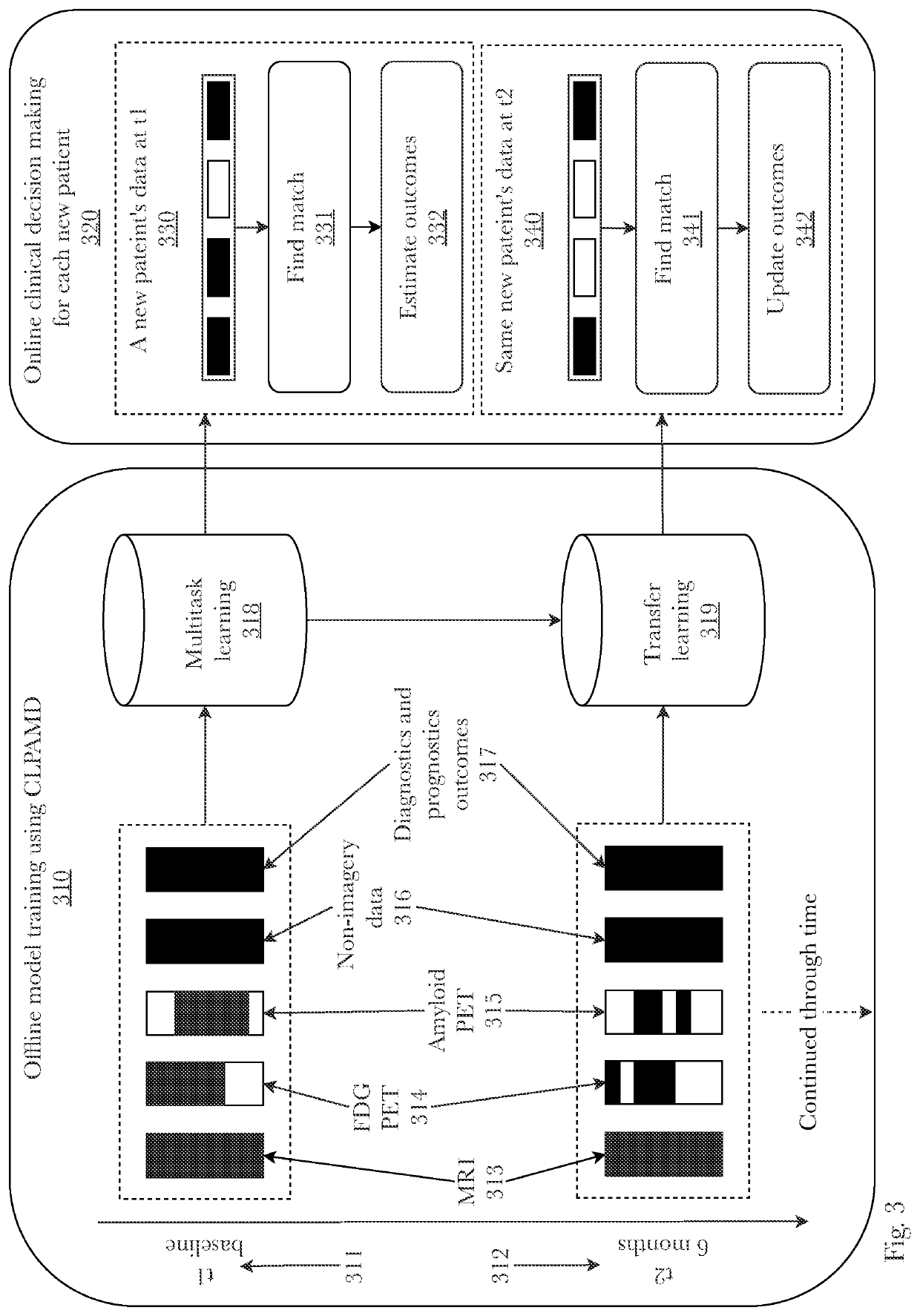System and method for diagnostics and prognostics of mild cognitive impairment using deep learning
a deep learning and diagnostic system technology, applied in the field of transfer learning, can solve the problems of delayed progression to ad or even preventing the patient from developing, and the early detection of ad at the mci phase has been a significant clinical challenge, and achieves the effect of improving accuracy
- Summary
- Abstract
- Description
- Claims
- Application Information
AI Technical Summary
Benefits of technology
Problems solved by technology
Method used
Image
Examples
Embodiment Construction
[0041]The inventor has conceived, and reduced to practice, a system and method for predicting mild cognitive impairment (MCI) related diagnosis and prognosis utilizing deep learning. More specifically, the system and method produce predictions of MCI conversions to Alzheimer's / dementia and prognosis related thereof. Using available medical imaging and non-imaging data a diagnosis and prognosis model is a deep learned model trained using transfer learning. An MCI-DAP server may then receive a request from a clinician to process predictions related to a target patient's diagnosis or prognosis. The target patient's medical data is retrieved and used to create a model for the target patient. Then details of the target patient's model and the diagnosis and prognosis model are compared, a prediction is generated, and the prediction is returned to the clinician. As new medical data becomes available it is fed into the respective model to improve accuracy and update predictions.
[0042]Softwa...
PUM
 Login to View More
Login to View More Abstract
Description
Claims
Application Information
 Login to View More
Login to View More - R&D
- Intellectual Property
- Life Sciences
- Materials
- Tech Scout
- Unparalleled Data Quality
- Higher Quality Content
- 60% Fewer Hallucinations
Browse by: Latest US Patents, China's latest patents, Technical Efficacy Thesaurus, Application Domain, Technology Topic, Popular Technical Reports.
© 2025 PatSnap. All rights reserved.Legal|Privacy policy|Modern Slavery Act Transparency Statement|Sitemap|About US| Contact US: help@patsnap.com



